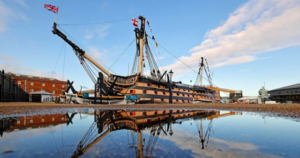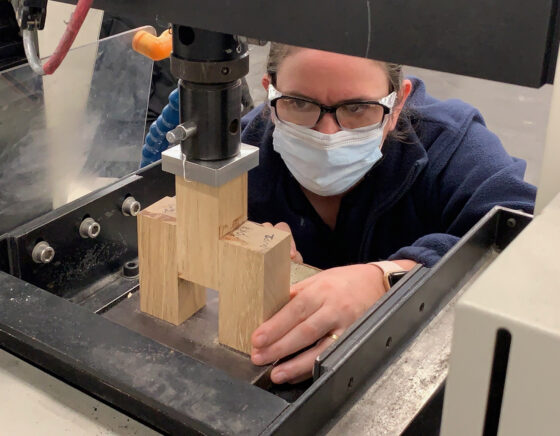
Paints and glues assessed to protect HMS Victory

According to the Royal Navy, ‘boffins’ are looking for the best paint, glues and fastenings to keep Nelson’s flagship weatherproof and watertight for the next half century.
Engineers from the University of Southampton are working with HMS Victory’s conservators ahead of the next phase of a £35m revamp of the legendary warship: replacing rotting planks, repairing the structure of the hull and renewing the rigging.
The university’s nC2 Engineering Consultancy has designed a series of tests to assess the long-term performance of a range of paints, caulking and glues (sealants) and metal fastenings being considered for the overhaul.
“Rainwater is probably our biggest enemy in terms of the ship’s preservation, so we are undertaking a ten-year programme of work to make sure the critical envelope of the ship is weatherproof,” says Diana Davis, head of conservation at the National Museum of the Royal Navy
“We want to know as much as possible about the materials we are using – taking an evidence-based approach to choose the right products. nC2 is helping us to do that and even if there’s no perfect product that will last the full 50 years, their data will enable us to plan our maintenance schedule to keep the ship watertight.”
nC2 director Dr Nicola Symonds said rain, wind and salt all took their toll on the 260-year-old man o’war, as did the summer heat.
“Much of the planking is painted black, so it gets hot in the sun on one side, but not the other – and this temperature difference takes its toll over time,” she says.
Her team has devised numerous tests to recreate the effects of the wear and tear of the environment, using their labs to simulate weathering over decades courtesy of specially-prepared samples.
Those tests will be repeated using different combinations of products, and on samples that have been treated to simulate the effects of wear, rain, sunlight and time. So paint is tested for adherence to the wood, flexibility and water resistance, using freshly-painted samples. The same tests are then undertaken on samples that have been ‘aged’ using ultraviolet light and salt spray, and samples which have been cooled or heated to specific temperatures.
Dr Symonds says that, individually, each test is “relatively simple ¬– but when you take into account that we’re using hundreds of samples and multiple combinations, it’s a complex task.”
The first phase of the project is now underway. Using hundreds of oak samples prepared by the museum’s shipwrights, nC2 is assessing the performance of nine different types of caulking and glue and five paints.
A future phase will examine metal plank fastenings to see how they interact with the wood, paint and caulking and examine any corrosion.
 Dr Nicola Symonds setting up a compressive double lap shear test on a glue
Dr Nicola Symonds setting up a compressive double lap shear test on a glue